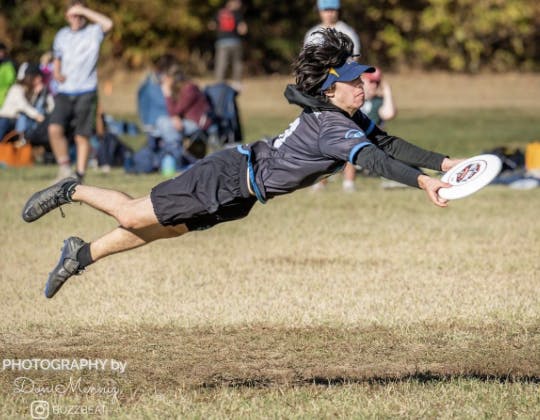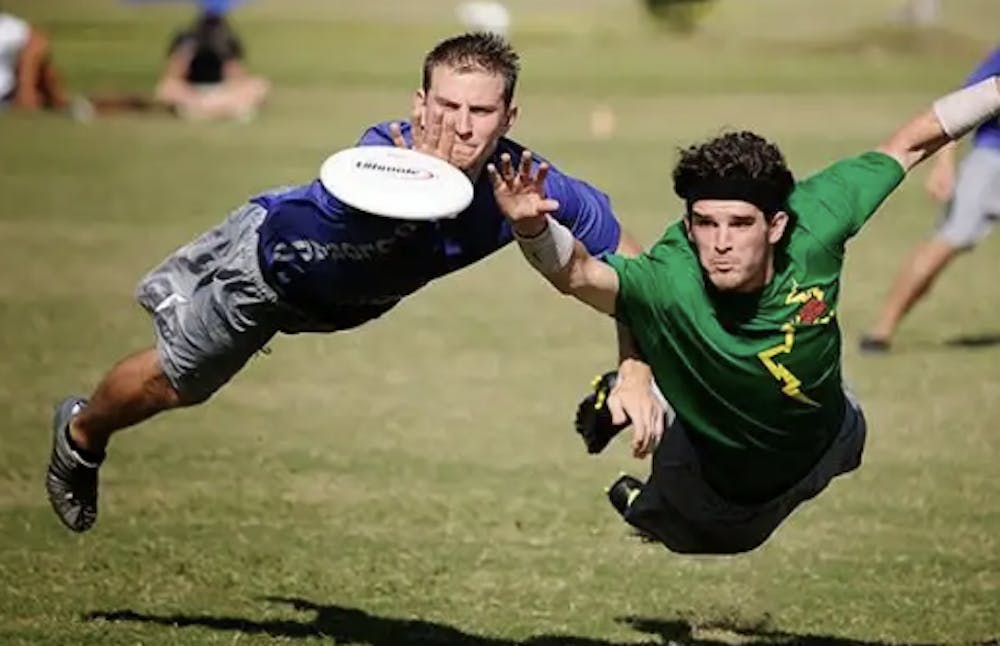It’s the final five seconds, and the huck goes up. Floating across the wide expanse of open green it looks like a perfect pass. Suddenly a breeze blows in and the disc falls short. Heading towards the ground it looks like a definite turnover, but wait! With one smooth motion, the player leaves their feet and glides through the air for a brief moment. Everyone's eyes are glued to the disc, will the player make it? Then, the disc meets the hand and they slam into the ground. For a brief second, there is confusion, but no, it’s a score! The fans go wild, the team floods the field, and the player slams the disc on the ground in excitement; what a game.
A layout score is certainly one of the most exciting elements of ultimate frisbee, but it's not the only one. From tossing a tin plate with a friend in 1960 to attending a packed crowd intensely watching a UFA final 60 years later, Ultimate is a sport to behold. Familiar to some and unheard of to others, this article seeks to discover the history of ultimate and explain the sport in its entirety up to today. What is Ultimate, who plays it, and why?

Pro player Marques Brownlee l Photo from Ultiworld
The game of Ultimate Frisbee might sound familiar these days, however, it wasn’t always so. The history of the game is a fascinating story that most players today are not familiar with. In 1968, Joel Silver, a high school student from Columbia High School in Maplewood, NJ, presented his idea of this strange new sport to the student council. It wasn’t long before members of the school were involved in this disc-tossing game in the empty parking lot of Columbia High. When Joel Silver and a couple of buddies came together to officialize and publish the rules of ultimate in 1970, it didn’t take much time for other schools to recognize the sport. 1972 brought about the first collegiate-level game which was held between Rutgers and Princeton, and a few years later in 1975 a tournament with eight teams was hosted at Yale, where Rutgers University dominated.
The World Flying Disc Federation (WFDF) which governed all disc sports was founded in 1984. After being introduced to the World Games in Karlsruhe, West Germany in 1989 and again as a medal sport in 2001 in Akita, Japan, Ultimate started to become a more popularized sport. Additionally, the first World Ultimate Club Championships (WUCC) was held in Germany in 1989, marking the beginning of more conventional international ultimate tournaments.
As Ultimate grew and began to gain more popularity, it was recognized as an innovative new sport where the players had an obligation to respect each other and the rules themselves, as enforced by SOTG, or Spirit of the Game. This element of Ultimate makes sure that all players have an equal say in disagreements over fouls or other calls made during the game, as well as a right to ask for other observations on the play at hand. Competitive play in ultimate is highly encouraged, however not at the expense of the mutual respect between players or the simple joy of the game.
Though SOTG (Spirit of the Game) has been and is an essential element to the game today, not all players agree that this is a completely helpful aspect of ultimate. Ian Owen-Riggan, a senior at SLA HS Center City and co-captain of the varsity team notes that SOTG is “Slightly outdated, but mostly beneficial for all parties involved.” Sebastian Becker, also an SLA student in his sophomore year, believes that “It also gives the aspect of arguing in a sport, but I don’t think it really works, with my experience I see people ‘breaking the spirit.’” Both students play for the SLA varsity team, as well as other USAU club teams during the winter and summer.

Nati Roemer-Block lays out for the disc I Photo by Don Mennig
Though SOTG can be seen as a form of regulation that is unorganized or ineffective, it is still important to recognize that it is the foundation that the sport relies on. “I love spirit,” says Azi Levites-Cohen, another SLA senior, “spirit in ultimate is what differentiates it from other sports.” Coincidentally, Levites-Cohen is one of the spirit captains on the SLA varsity team, however his point still stands. Ultimate is known for creating a community that is based on inclusivity, and it attracts a passionate crowd. “I really like the community,” says SLA captain Nati Roemer-Block, “It’s what keeps me coming back as the competition intensifies.”
So what can we learn from this sport, besides its inclusive environment and strange but mostly effective rules such as SOTG? Chris Lehmann is the founding principal of SLA schools and still the current ultimate coach for the varsity team. “I think it's just a beautiful game.” Lehmann says, “It's a ton of fun to play, it requires a combination of different kinds of athleticism…and there’s a great combination of strategy and “flow” that makes it fun to coach.”
Ultimately (pun intended), ultimate is a rapidly expanding sport that brings together people from all walks of life. From tossing a disc on a sunny day in the park to playing in a UFA or YCC (Youth Club Championships) final, ultimate is an engaging and unique sport. Next time you see a 175-gram disc lying around give it a toss, and you never know, you might just have the next best layout on the highlight reel.




